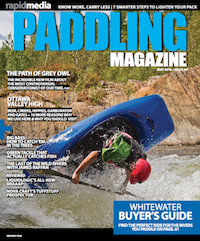How do we determine risk? What are the biggest wild cards in outdoor adventure? How do we make decisions that will best serve ourselves and those around us? Here are a few factors to ponder before your next wilderness trip.
6 questions to ask yourself to determine risk on trip
1 Perceived and real risk
Not to start on a discouraging note, but human beings are notoriously terrible at assessing risk. According to one study, over 90 percent of drivers rank themselves better than the average driver (somewhat disconcerting!). Driving is one of the riskiest activities we undertake everyday, yet our familiarity and perception of control—to say nothing of our cultural dependence on the internal combustion engine—make us more than willing to take this risk on a regular basis. Whether consciously or not, we often choose to disregard risks that hamper our lifestyle choices.
2 Likelihood
Nobel Prize winner Daniel Kahneman observed that most human beings have a basic inability to deal with small risks. We either ignore them or give them far too much weight. Is it possible that a frolicking orca might capsize you face first into a poisonous jellyfish to which you have an anaphylactic reaction? Yes, it’s possible. But it’s far more likely that we will meet our demise through heart disease or cancer (the two most common causes of death in North America). Don’t worry about everything, take the time to determine the likelihood and severity of relevant risks, and respond accordingly.
3 Emotion versus reason
A single powerful image can have a far more powerful impact than a dozen carefully researched but dry facts. Good teachers know this, as do terrorists, politicians and anyone working in the advertising industry. Don’t disregard
that story of a disastrous one-in-a-million fluky misadventure, but do take into consideration how this fits into the bigger scheme of things.
4 Cluelessness and complacency
When we are completely out of our element, we are clueless about the risks. Oblivious tourists posing with thankfully indifferent bears or inebriated rafters on the local whitewater river are two examples that come to mind. Luckily many people survive this unconscious incompetence stage and with increased understanding make better choices. Eventually, though, we can become complacent as we feel utterly familiar with our boats, gear, skills and environment—this is where systems can help prevent avoidable errors.
5 Systems
Check lists, buddy systems, safety vetoes and risk assessment procedures can take different forms. Some outdoor organizations follow written standard risk assessment forms each time a key variables changes. Whatever systems you choose to use, it doesn’t hurt to take a moment to discuss the probability and consequences of risks, and develop some emergency response plans. Better a bit too much planning than ruining your trip with an avoidable disaster.
6 Added lemons
We can seek to plan for every eventuality, but added risk factors often still accumulate. Fatigue, increasing weather conditions, extreme temperatures, low blood sugar, lateness in the day, emotional turmoil, time change, new equipment, pride, interpersonal challenges, and external expectations are all factors that can cloud our judgment. One or two of these can be mitigated, but if too many pop up, better go ashore and wait for a fresh start the next day.



